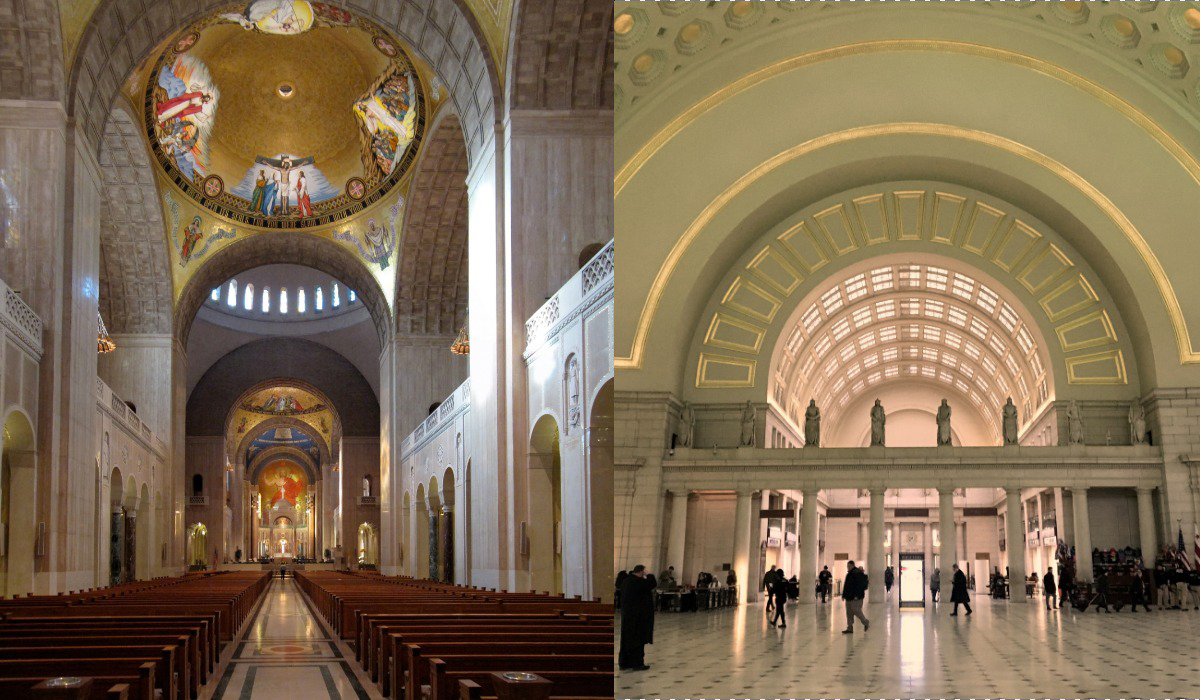

Professor Julio Bermudez Wins a Competitive Grant to Explore New Ground
When devout Catholics enter a church, they undergo physical changes in their brains and bodies. Professor Julio Bermudez, director of the Cultural Studies and Sacred Space graduate program in the School of Architecture and Planning, has won a $200,000 grant from the Templeton Religion Trust to conduct a study of these phenomena.
“Artists and architects have always known that the way we gain access to God, and the teaching of God, is most often through art,” Bermudez says. “It was a way we could access spirituality before most people were able to read and write.”
Bermudez and a team of interdisciplinary scholars will use a combination of measures to study how two buildings — one sacred, one secular, but similar in scale and by other measures — affect Catholic believers in Washington, D.C. The buildings he has chosen are the Basilica of the National Shrine of the Immaculate Conception and Union Station.
Joining Bermudez will be Yoshio Nakamura, a cognitive psychologist at the University of Utah; Mohamad Koubeissi, a neurologist at George Washington University; and Thomas Beaudoin, a theologian at Fordham University. The team hopes to recruit volunteers from Catholic University for the study. They will be looking for men and women of various ages and levels of devoutness. No architects will be included.
“We don’t want people who have training in architecture to respond to these buildings,” Bermudez explains.
One group of volunteer subjects will make individual visits to the Basilica first, and subsequently go to Union Station. Another group will reverse the sequence. Each subject will follow a preordained path through each building, similar to that which an ordinary person would follow. They will be wearing ambulatory electroencephalogram (EEG) devices that will be activated at five points during their visit. Wristbands will measure their blood pressure, skin conductivity, heart rate, and so on. And they will fill out a simple questionnaire when their visit is over.
“We can all agree that when Catholics enter a Catholic church, they begin to enter into a contemplative state,” Bermudez says, “but we don’t have a clear scientific understanding of how it’s possible. Clearly, there’s a cognitive event happening that connects our sense perception, our intellect, our emotions, our intuition, in an experience that delivers us into a spiritual reality of some sort.”
Previously, Bermudez did a study in which he showed photographs of five buildings (three Catholic, one Muslim, and one secular) to subjects while using a functional Magnetic Resonance Imaging scanner (fMRI) to measure their brain activation. When the photographs produced a contemplative state in a subject, the fMRI showed that some areas of the brain shut down, while others became active.
With this new study, Bermudez expects to be able to show how the brain operates as subjects undergo an experience in real time, not simply looking at photographs.
“There are about as many neurons in our brain as stars in our galaxy,” Bermudez says. “How do the neurons know to talk to each other? What apparently is happening is that they communicate through the same electrical channel, or waveform. When you see the whole brain activity happening as waveforms with an EEG, you cannot really see what happens inside; but when you use fMRI to gain more accurate knowledge about what happens inside, you lose track of the neural ‘conversation’ of the whole. Right now, the technology is either/or — you can’t have both. The fMRI is impossible to carry around, but the technology of an ambulatory EEG has developed to the point where it is now feasible to find out what wavelengths are operating in the brain as someone goes through this experience.”
Bermudez and his team are conducting this pilot study in hopes of getting more funding to continue research. He hopes to bring attention to the School of Architecture and Planning and to the University more broadly, perhaps leading to the establishment of an interdisciplinary academic program in theological aesthetics.